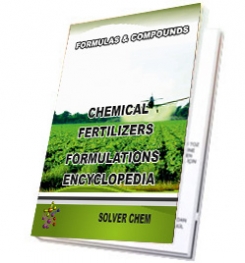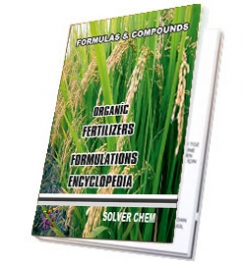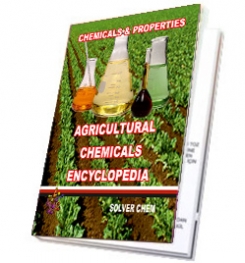Nothing much compares to the juicy taste of a red, ripe tomato straight out of the garden. These delectable fruits not only taste great but are quite easy to grow. Tomatoes (Solanum lycopersicum) can grow in a variety of conditions with exception of extreme cold, and they don’t require a lot of space. There are many varieties to choose from depending on individual preferences and hardiness zones.
Types of Tomatoes
Some of the most common types of tomatoes include:
- Cherry
- Main Crop
- Roma
- Beefsteak
- Long Keepers
Cherry tomatoes are easy to grow and mature quite early. These small, bite-sized snacks are a big hit with children and can be easily grown in containers.
Oftentimes the most widely grown in home gardens, the Main crop varieties produce an exceptional harvest during mid-season.
Roma tomatoes sometimes referred to as Plum tomatoes, are generally small and elongated. These tomatoes are normally grown for canning purposes.
The commonly known beefsteak is considered to be the ‘Big Daddy’ of tomatoes because of its large size, making these veggies perfect for making sandwiches. This type usually does not mature until well into the growing season, however.
Many yellow or orange tomatoes are considered long keepers as they can normally be stored for several months provided the area is cool and dark.
How to Grow Tomatoes
Given the proper climatic conditions, you can grow tomatoes nearly anywhere. The soil should consist of organic matter, usually in the form of compost, with sufficient amounts of fertilizer and moisture. When growing tomatoes, you should start early since most take awhile to mature. If you are unfamiliar with growing tomatoes from seeds, you may want to consider purchasing the plants themselves, many of which are widely available at most garden centers and nurseries.
The seeds normally take 6-8 weeks of growing and must behardened off before they are transplanted into the garden. They can be started in a window box or small flats and then transplanted into small pots, paper cups with adequate drainage holes, or other containers once seedlings have become sturdy enough. Thin the seedlings as needed and pinch the tops to create stronger, stockier plants. Planting distances for tomatoes generally depend on the variety. These can also be found on the seed packets or refer to planting guidelines for your area.
Tomatoes do not thrive in cool conditions; tomatoes require an average temperature of 65 degrees F. (18 C.) or higher to ripen. Therefore, be sure to wait until any threat of frost is past before setting your plants in the garden. Tomatoes require areas with full sun and should have adequate protection from strong winds as well. To help tomato seedlings become sturdier, you can lay them on their sides and cover them with soil. Leave the tops exposed; after a couple days, the tops will straighten and begin to grow upright.
Once tomato plants become sturdy enough, you should stake them for further support. Staking tomatoes also makes harvesting easier, as the fruits are more accessible since they are kept off the ground.Tomatoes require a lot of water : therefore, to help retain moisture, you should always mulch tomato plants. You should also have tomato plants situated in an area that is easily accessible to water.
Check tomato plants daily for any ripe produce; picking often will encourage more production. Once the end of growing season has neared, it is helpful to remove any blossoms as well to encourage nutrients to reach existing fruits. If you still have an abundance of green tomatoes during this time, go ahead and pick them. These can be stored in a warm, moist area up to four weeks eventually ripening and turning red.
Tomatoes and Pests
You should also periodically check your plants to make sure they are healthy. Tomato plants emit a mild toxin that discourages many small insects from bothering them but common pests can pose significant problems if not taken care of. These include:
- cutworms
- beetles
- aphids
- hornworms
- tomato fruitworms
- whiteflies
Many of these insects can be easily removed by hand or with the use of soapy water sprays. Chemical insecticides are not generally recommended. Planting flowers with strong aromas, such as marigolds, can also help fight off pests.
RELATED TAGS: How to care tomatoes, how to grow tomatoes, growing of tomatoes, fertilization time of tomatoes, fertilization programme of tomatoes,tomatoes fertilizers, problems of growing tomatoes, types of tomatoes, irrigation of tomatoes, feeding of tomatoes, seed of tomatoes, tomatoes plants growing, tomatoes diseases,what is alternia diseases for tomatoes plants, tomatoes pests,
any liquid and solid organic fertilizer,
ORGANIC
FERTILIZERS
FORMULATIONS
ENCYCLOPEDİA
is enough.
This encyclopedia has many formulations about organic soil conditioner,humic acid productions,compositions,fulvic acid manufacturing,organic fertilizers,animal manure,amino acid organic fertilizers, organomineral powder fertilizers,organomineral liquid fertilizers productions,liquid root growth fertilizers formulas,granular root growth fertilizers,seaweed organic fertilizers,wermicompost fertilizers formulations,gel organic fertilizers,organomineral gel fertilizers manufacturing and any organic fertilizers etc.
All organic fertilizers in the encyclopedia are producible easily.You need no help and no technıcal support. The encyclopedia is enough to produce organic fertilizers itself.
ORGANIC
FERTILIZERS
FORMULATIONS
ENCYCLOPEDIA
is written clear and understandable.
RELATED TAGS: What is organic fertilizer,preparation of organic soil conditioner, liquid organic fertilizer manufacturing,animal manure manufacturing, manufacturing proces of animal manure,chicken manure,efficiency of humic acid in soil,effect of humic acid in plants, advantages of humic acid in agriculture, types of animal manure,seaweed fertilizer manufacturing process,production of liquid seaweed fertilizers, what is organic compost, preparation of organic compost,how to use organic compost,making organic compost, using of seaweed fertilizer,properties of seaweed organic fertilizers how to make liquid organic fertilizers, making organic compost,types of organic compost,manufacturing process of organic compost, how to make organic compost fertilizers, production of organic fertilizers, how to make organomineral fertilizer, production of organomineral fertilizers, calculating liquid organomineral fertilizers,powder organomineral fertilizers manufacturing,preparation of organomineral fertilizers,types of liquid organomineral fertilizers, manufacturing process solid humic acid, formulation of humic acid,value of humic acid,manufacturing process of fulvic acid,how to produce humic acid,what is leoardite,where to use leonardite,types of leonardite,properties of leonardite,analyzes of leonardite,specification of leonardite, values of leonardite, what is leonardite humate,what is potassium humate, liquid humic acid preparation,powder humic acid production, granular soil conditioner manufacturing process, powder soil conditioner making,formulation of organic soil conditioner, making powder humic acid,humic acid production, composition of organic fertilizers,how to use organic fertilizers,why to use organic fertilizer,types of organic fertilizer,benefits of organic fertilizers,wermicompost fertilizers making, powder organic fertilizers,how to use organic fertilizers, making wermicompost fertilizer, formulation of seaweed fertilizers, amino acid fertilizer production,granular organic fertilizer,amino acid organic fertilizer manufacturing, properties of organic fertilizers, analyzes of organic fertilizer, specification of organic fertilizers, where to use organic fertilizers, what is soil amendments, humic acid making, how to make powder humic acid, manufacturing process of fulvic acid, herbal fulvic acid making, liquid humic acid process, formulation of humic acid,organic fertilizers for plants, organic fertilizers in agriculture, how to produce organic fertilizers, animal manure manufacturing process, herbal fertilizers, what is organic fertilizer compost, what is organic agriculture, how to make organic agriculture, advantages of organic fertilizers, effects of organic fertilizer, results of organic fertilizers, indications of organic fertilizers, symptoms of organic fertilizers, preparation of organic fertilizers, calculation of organic fertilizers, compounds of organic fertilizers,composition of liquid organic fertilizers, fertilization of organic fertilizers,why to use organic fertilizers.what is humate, types of humates,benefit of humate,potassium humate manufacturing process.,using powder soil conditioner, properties of granular soil conditioner,what is pellet organic soil conditioner.what is amino acid fertilizer, how to use organic amino acid fertilizsers,making amino acid fertilizers,formulation of amino acid fertilizers,manufacturing process of amino acid fertilizers, what is organic compost, where to use organic compost, types of organic compost in plants,benefits of organic compost in soil, preparation of organic compost in agriculture.


E - BOOKS AND HARD BOOKS

HOW TO BUY
AGRICULTURE ENCYCLOPEDIAS AND VIDEOS
|
|
|
|
|
|
|
|
|
